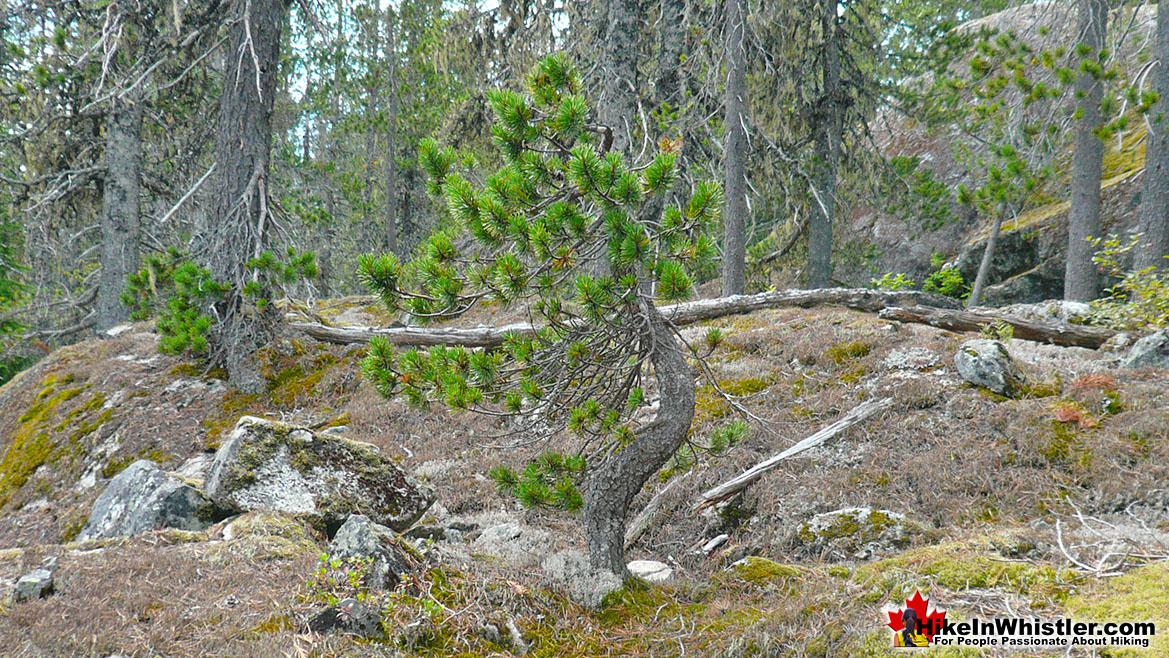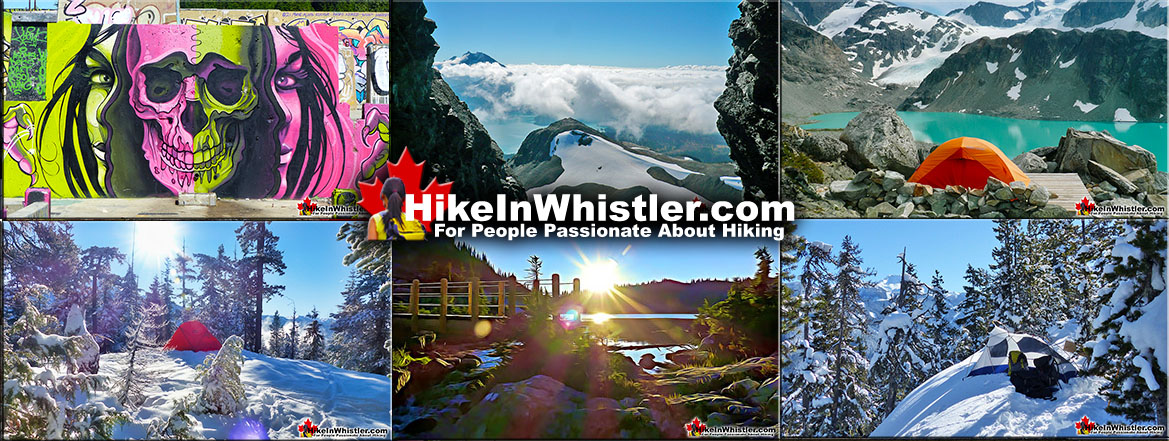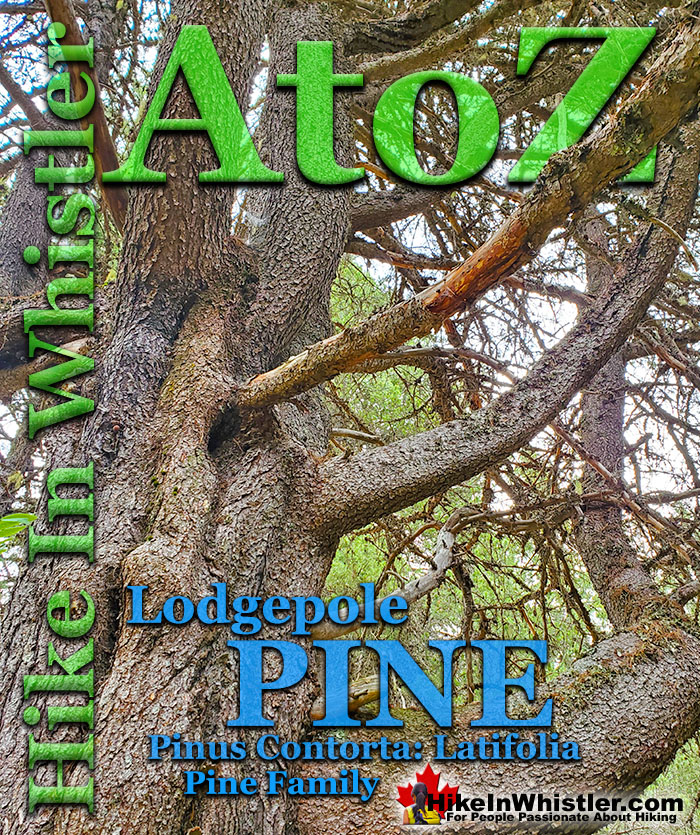
![]() Along Whistler’s Valley Trail near Rainbow Park you come across some impressively unusual trees. Unlike most other Whistler trees with straight trunks and slender branches, these lodgepole pines have wide gnarled trunks and magnificently huge, muscular branches. The branches of are of various sizes, ranging from very thick and long to enormous and long enough to disappear into the forest canopy. The more impressive branches emerge from the trunk nearly horizontal, then abruptly bend skyward.
Along Whistler’s Valley Trail near Rainbow Park you come across some impressively unusual trees. Unlike most other Whistler trees with straight trunks and slender branches, these lodgepole pines have wide gnarled trunks and magnificently huge, muscular branches. The branches of are of various sizes, ranging from very thick and long to enormous and long enough to disappear into the forest canopy. The more impressive branches emerge from the trunk nearly horizontal, then abruptly bend skyward.
Whistler & Garibaldi Hiking
![]() Alexander Falls
Alexander Falls ![]() Ancient Cedars
Ancient Cedars ![]() Black Tusk
Black Tusk ![]() Blackcomb Mountain
Blackcomb Mountain ![]() Brandywine Falls
Brandywine Falls ![]() Brandywine Meadows
Brandywine Meadows ![]() Brew Lake
Brew Lake ![]() Callaghan Lake
Callaghan Lake ![]() Cheakamus Lake
Cheakamus Lake ![]() Cheakamus River
Cheakamus River ![]() Cirque Lake
Cirque Lake ![]() Flank Trail
Flank Trail ![]() Garibaldi Lake
Garibaldi Lake ![]() Garibaldi Park
Garibaldi Park ![]() Helm Creek
Helm Creek ![]() Jane Lakes
Jane Lakes ![]() Joffre Lakes
Joffre Lakes ![]() Keyhole Hot Springs
Keyhole Hot Springs ![]() Logger’s Lake
Logger’s Lake ![]() Madeley Lake
Madeley Lake ![]() Meager Hot Springs
Meager Hot Springs ![]() Nairn Falls
Nairn Falls ![]() Newt Lake
Newt Lake ![]() Panorama Ridge
Panorama Ridge ![]() Parkhurst Ghost Town
Parkhurst Ghost Town ![]() Rainbow Falls
Rainbow Falls ![]() Rainbow Lake
Rainbow Lake ![]() Ring Lake
Ring Lake ![]() Russet Lake
Russet Lake ![]() Sea to Sky Trail
Sea to Sky Trail ![]() Skookumchuck Hot Springs
Skookumchuck Hot Springs ![]() Sloquet Hot Springs
Sloquet Hot Springs ![]() Sproatt East
Sproatt East ![]() Sproatt West
Sproatt West ![]() Taylor Meadows
Taylor Meadows ![]() Train Wreck
Train Wreck ![]() Wedgemount Lake
Wedgemount Lake ![]() Whistler Mountain
Whistler Mountain
![]() January
January ![]() February
February ![]() March
March ![]() April
April ![]() May
May ![]() June
June ![]() July
July ![]() August
August ![]() September
September ![]() October
October ![]() November
November ![]() December
December
Just looking at the top half of one of the lodgepole pines near Rainbow Park, it would appear as several trees growing close together, instead of one tree with parallel, upward growing branches. In fact, some of the largest, skyward growing branches are similarly thick as the trunk, which nearer the top of the tree split into four closely packed trunk-sized branches. This chaotic frenzy of gigantic branches gives these trees a marvelously striving and powerful appearance, like supersized bodybuilders in the midst of normal sized people. The base of these bizarrely beautiful trees follows a similar pattern to the branches. Where the trunk meets the hard, cement-like ground is a tangled row of startlingly enormous roots emerging horizontal and plunging down into the ground. It is easy to think that decades have worn the forest floor away revealing the roots, but it appears that these trees grow this way on purpose. Maybe as a way to better stabilize the enormous girth above, or maybe to avoid unseen rocky ground below. Whatever the reason, none of their neighbouring big trees replicate this sprawling, exposed root pattern these big lodgepole pines exhibit. This chaotic array of powerful roots, like the similarly thick branches above, set these old pines apart from their more conventional tree neighbours. With their thick trunks, enormous branches, and grey, old and scaly bark, these grizzled old lodgepole pines look ancient, however they are probably just a couple hundred years old. Not that two centuries isn’t old for a tree, but nearby, similarly aged western redcedars, western hemlocks and Whistler spruce trees look comparatively youthful.
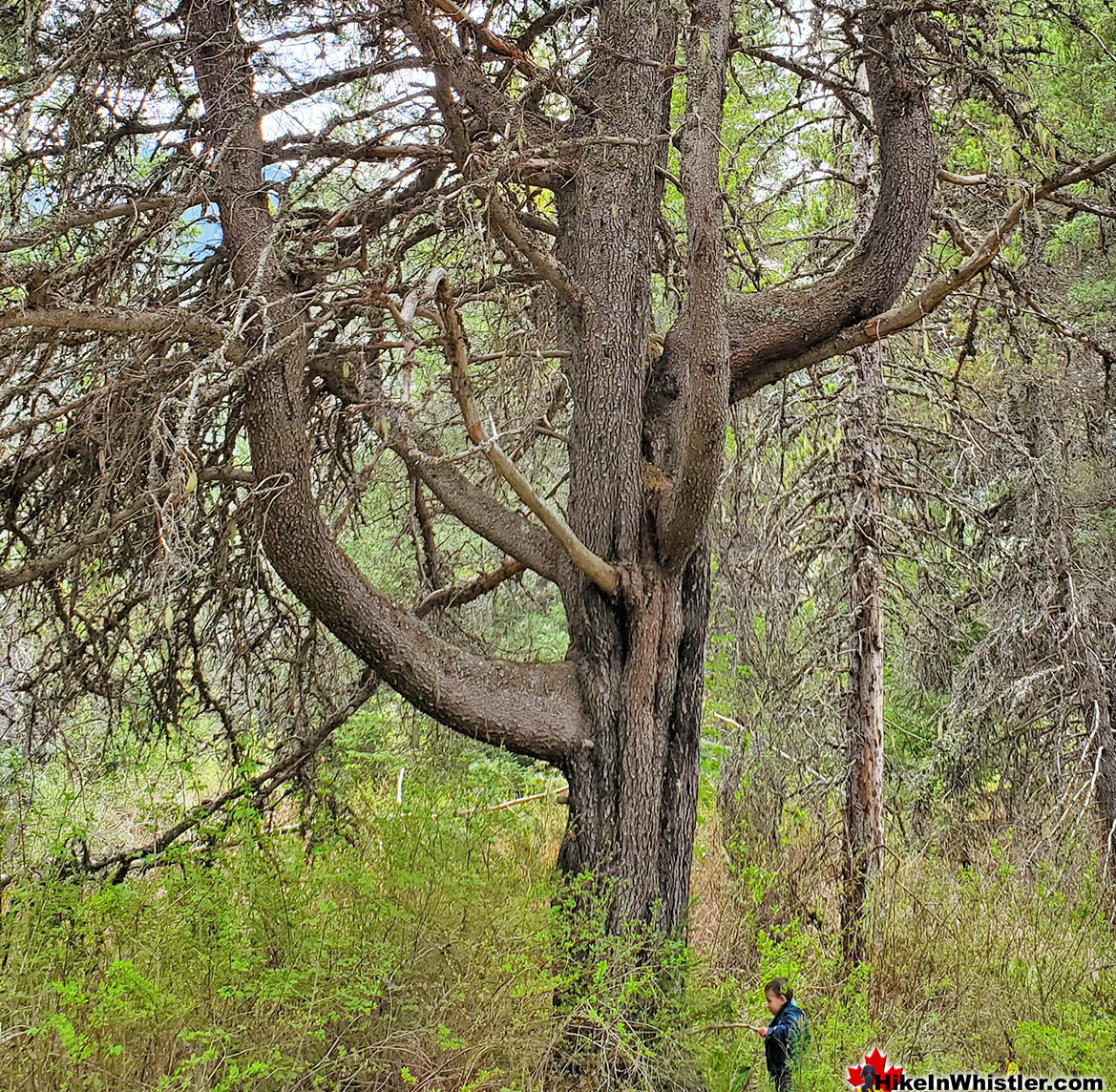
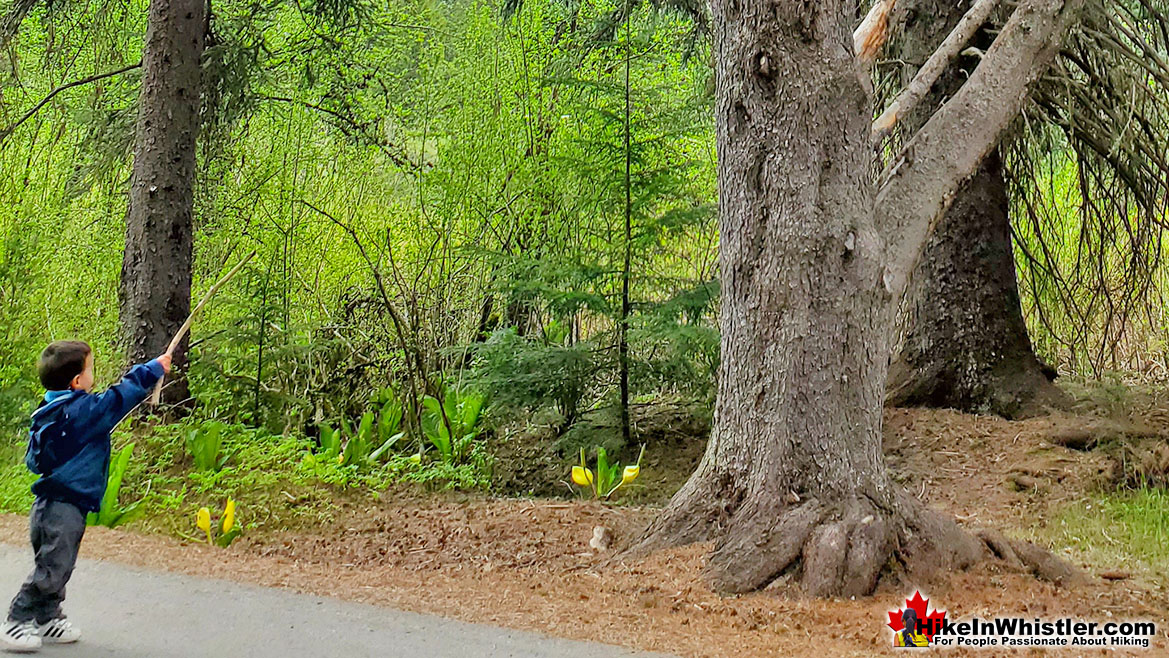
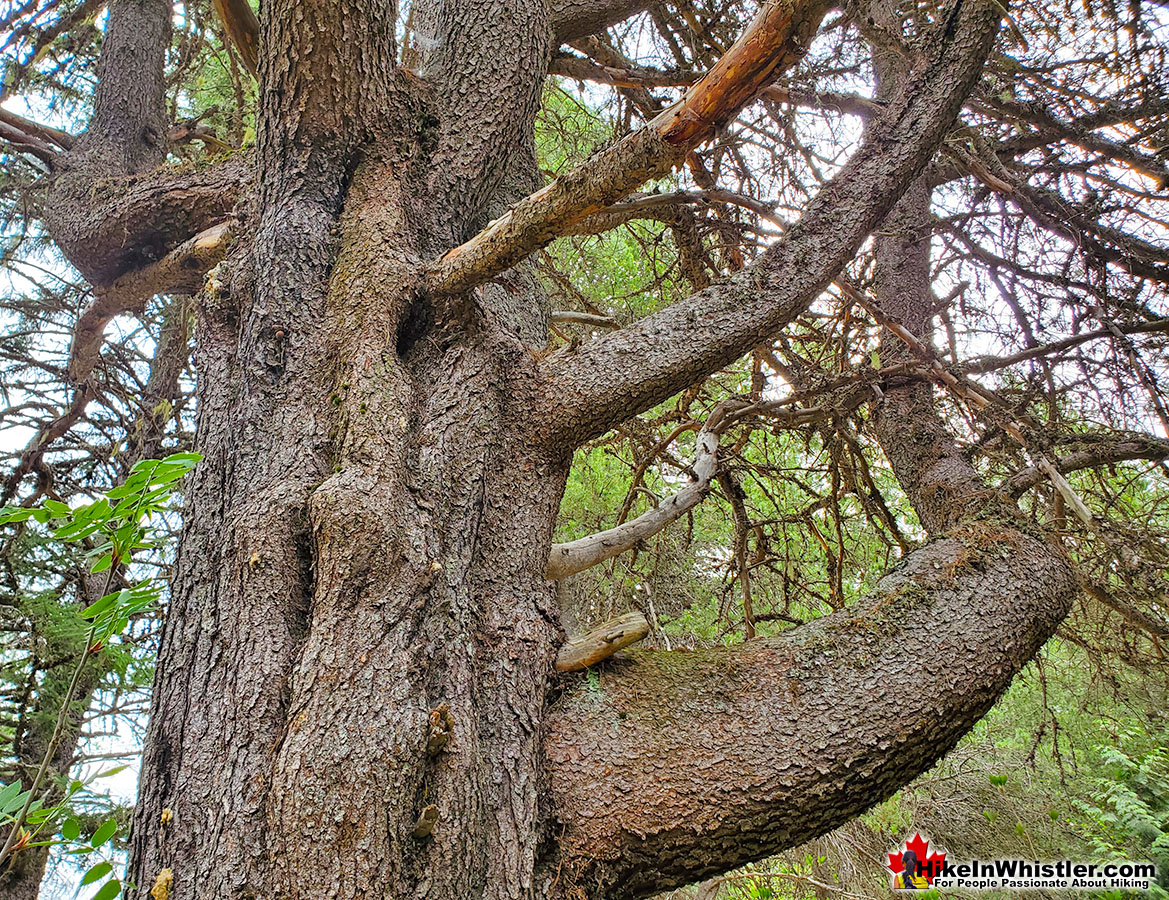
The arrestingly hardy appearance of these lodgepole pines is a clue to their remarkable adaptability to difficult environments. You are just as likely to find lodgepole pines growing in dry, sandy soil as you are to find them in swampy terrain. Though not readily noticeable on a hot July day, but the big, gnarled lodgepole pines near Rainbow Park reside in fairly swampy ground much of the year. If you were to look across the nearby train tracks you would see an expanse of wetland extending to the forest beyond. The much smaller, though no less hardy lodgepole pines that grow on the rock plateau near the Whistler Bungee Bridge in Brandywine Falls Provincial Park, exist in a considerably drier environment.
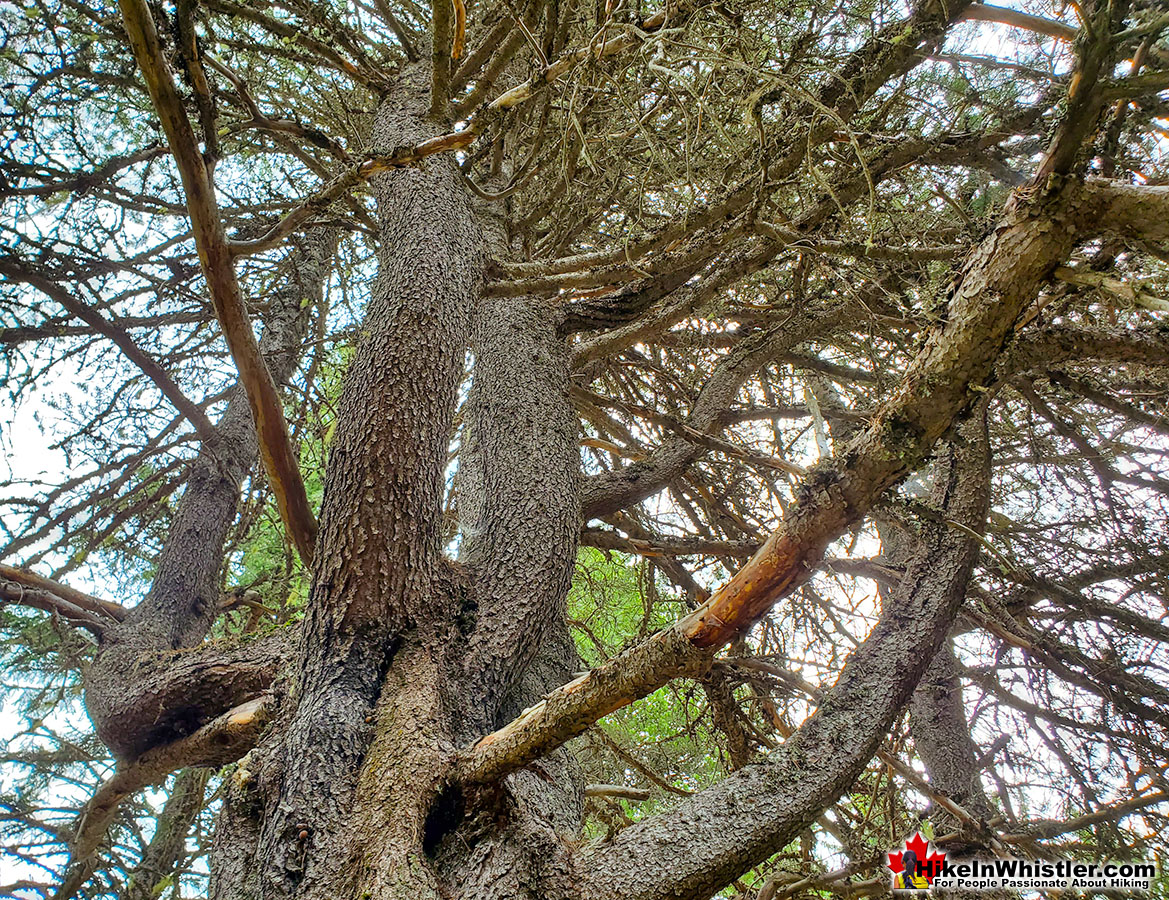
An interesting feature of lodgepole pines is that they largely rely on forest fires to propagate. The seeds in lodgepole pine cones is protected by a layer of pitch which keeps them safe until the heat from a forest fire releases them. After a forest fire sweeps through a valley, lodgepole pines are one of the first trees to appear in fantastic numbers. The lodgepole name originated from the frequent use of these trees by indigenous people as support poles for teepees and lodges. Lodgepole pine is the common name of one of four subspecies of Pinus contorta. Its full scientific name is Pinus contorta subsp. latifolia. The other, naturally growing subspecies of Pinus contorta you may encounter in the vicinity of Whistler is the shore pine, or Pinus contorta subsp. contorta. These grow all along the Pacific coast from Alaska to California, whereas lodgepole pines grow more in the interior of BC, in the Rocky Mountains from Colorado to the Yukon and as far as Saskatchewan. The other two subspecies, bolanderi (Bolander’s beach pine) and murrayana (tamarack pine, or Sierra lodgepole pine), range only in the southwest United States. The Pinus contorta species gets their descriptive name contorta for two reasons. First, weather battered, coastal lodgepole pines often have a battered and contorted form. Second, their needles have a contorted, or slightly twisted shape to them.
How to Identify a Lodgepole Pine in Whistler
Identifying a lodgepole pine in Whistler is easy if you find the ones on the Valley Trail from Lorimer Road to Rainbow Park mentioned above. Less obvious ones in Whistler might require a closer look. The bark on lodgepole pines is noticeably scaly looking like cornflakes. The colour is greyish brown and sometimes with orange highlights in the furrows. The bark is very similar to Whistler spruce trees, so you then have to check out the needles. Lodgepole pine needles are about 5cm long and grow in bundles of two. Overall, the needles are arrayed around the twig. The pine cones are fairly distinct when compared to other Whistler trees. Less than 5cm long, lodgepole pine cones are small compared to other pines. Each cone scale has a tiny prickle on it. The cones sometimes grow in pairs and occasionally point back towards the trunk.
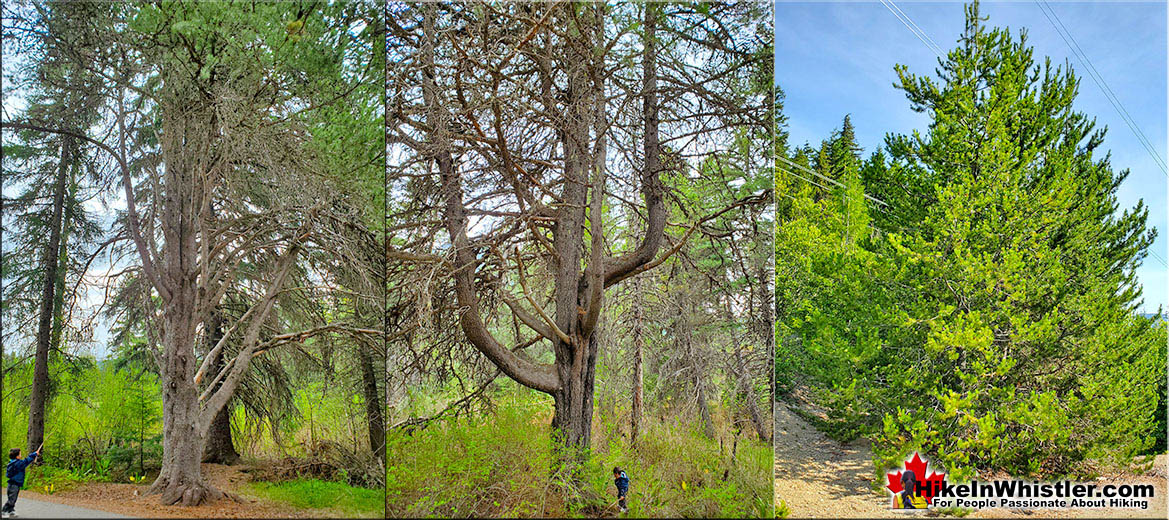
Lodgepole Pine Bark
Lodgepole pine bark grayish brown and cornflake like in appearance. You may see a slight orange colouring between the flakes. Whistler spruce trees have similar scaly, cornflake like bark, though the scales are much larger on Whistler spruce trees.
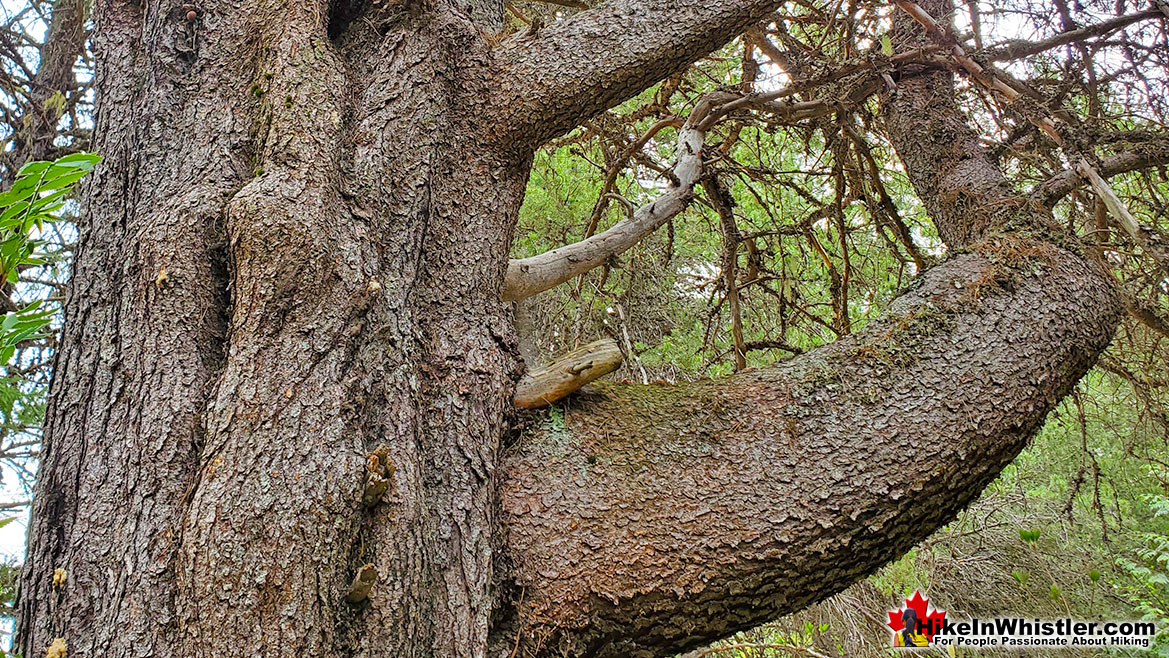
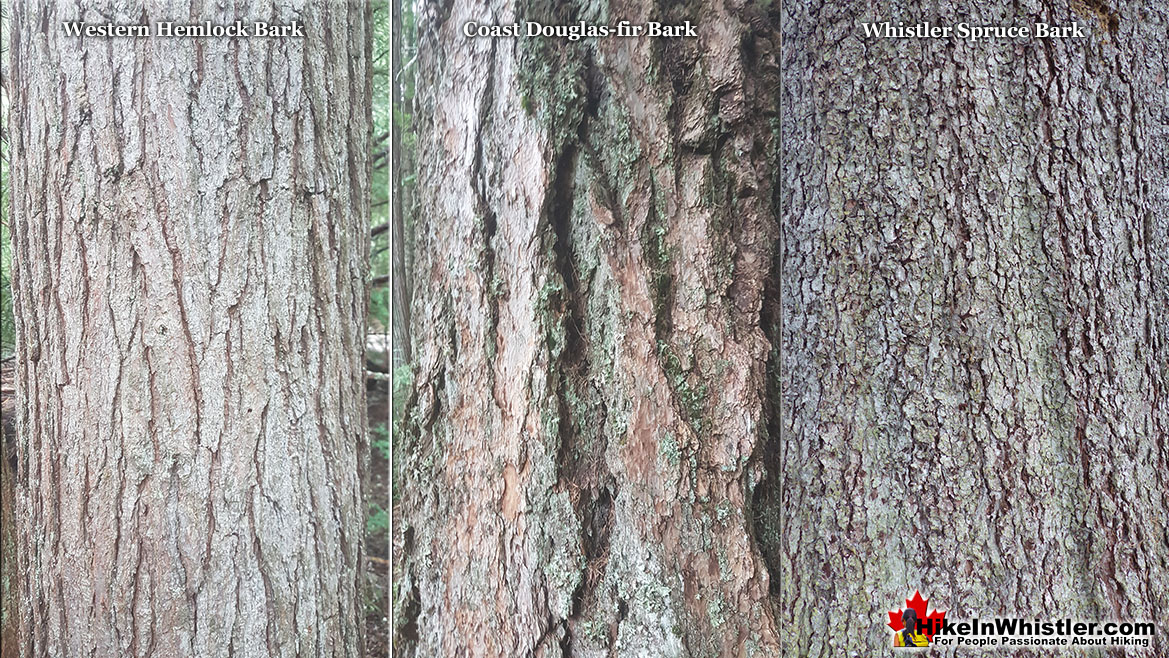
Lodgepole Pine Needles
Lodgepole pine needles are possibly the easiest, distinguishing feature. They will be arrayed in bundles of two, a feature you don’t see in other Whistler tree needles.
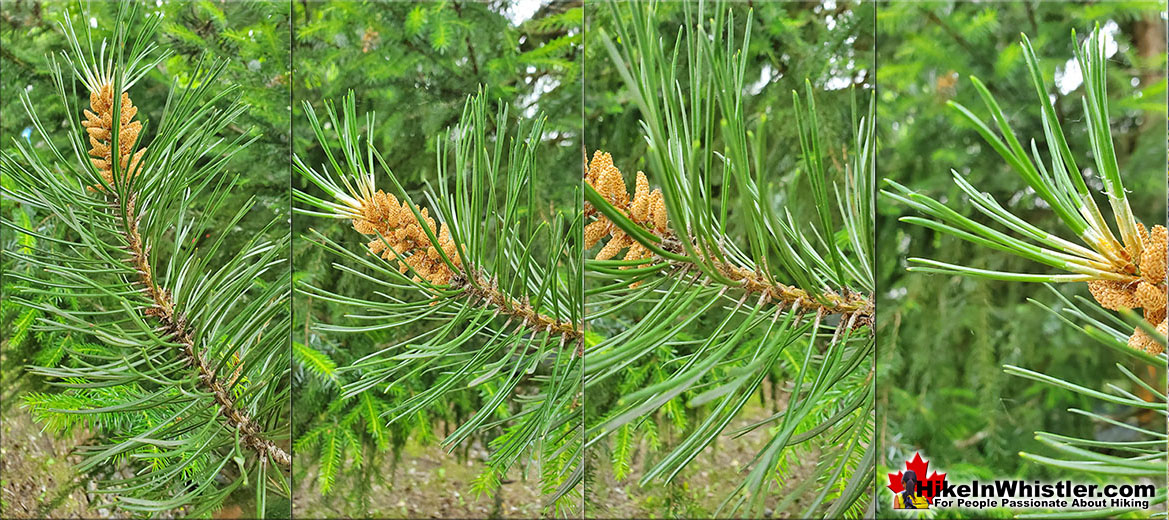
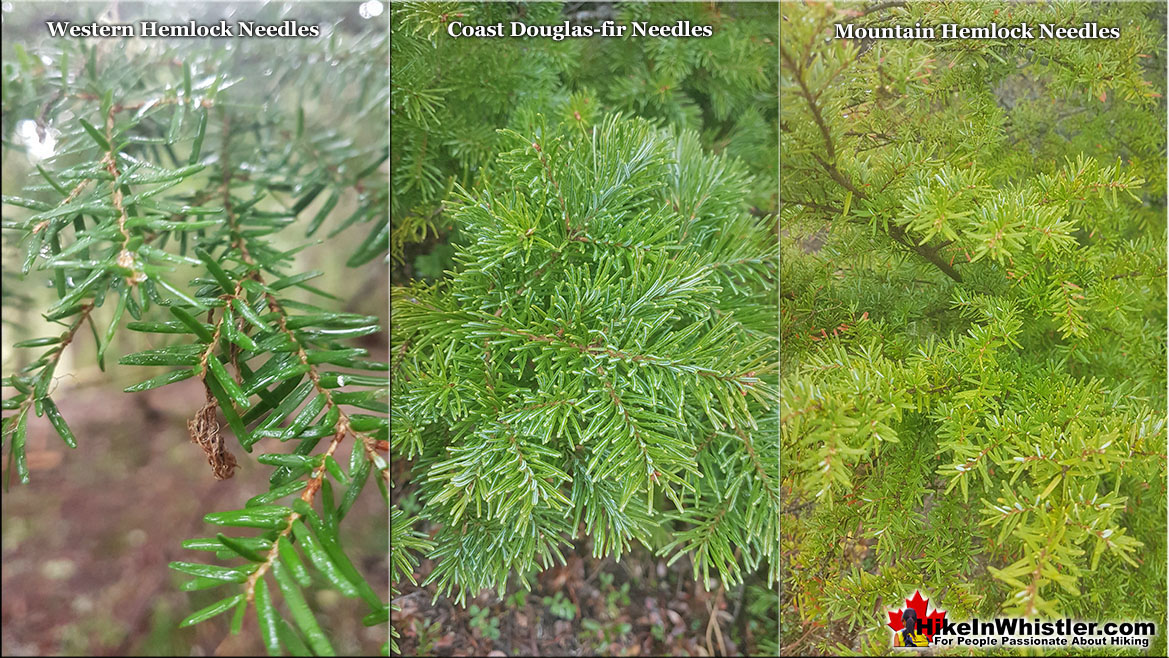
Lodgepole Pine Cones
Lodgepole pine cones are fairly easy to distinguish from other Whistler area tree cones. They are fairly small, less than 5cm long, egg-shaped, and each scale has a very noticeable prickle at the tip. Young cones are light green in colour and turn brown as they age. Lodgepole pine cones are attached directly to the branch without a stalk and it is not unusual to see an old cone attached for years.
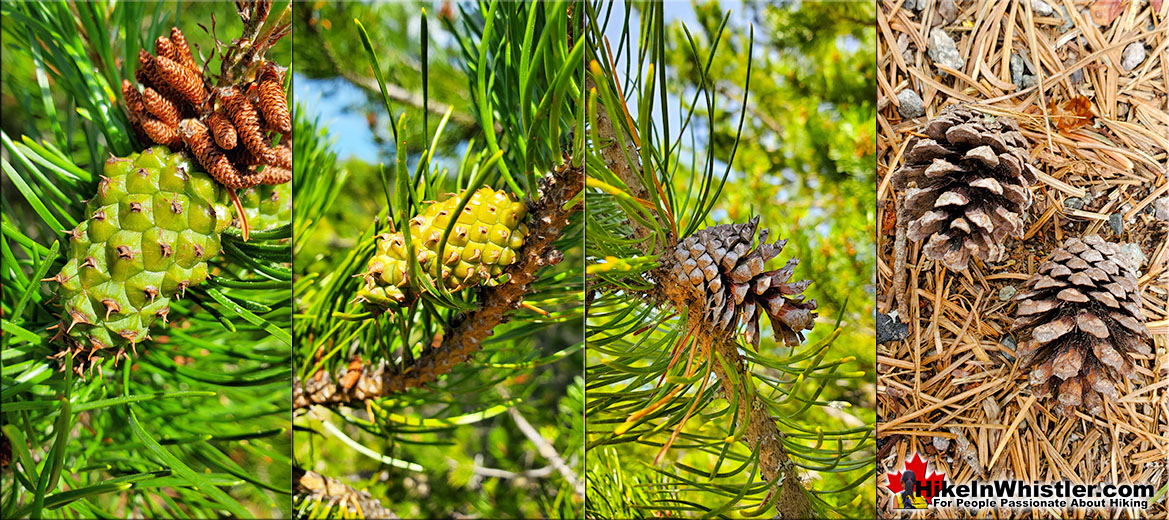
Lodgepole Pines in Whistler
Lodgepole pines require a lot of sun and in Whistler you often find them in sunny plateaus on various hiking trails. The Brew Lake trail has several rocky, sunny and very dry plateaus with several hardy lodgepole pines growing as krummholz. Near the Whistler Bungee Bridge alongside Cheakamus River you will find similarly hardy trees growing on the hard, rocky plateau. Certainly the best examples of mature lodgepole pines in Whistler are the terrifically gnarled, old pines along the Valley Trail near Rainbow Park.
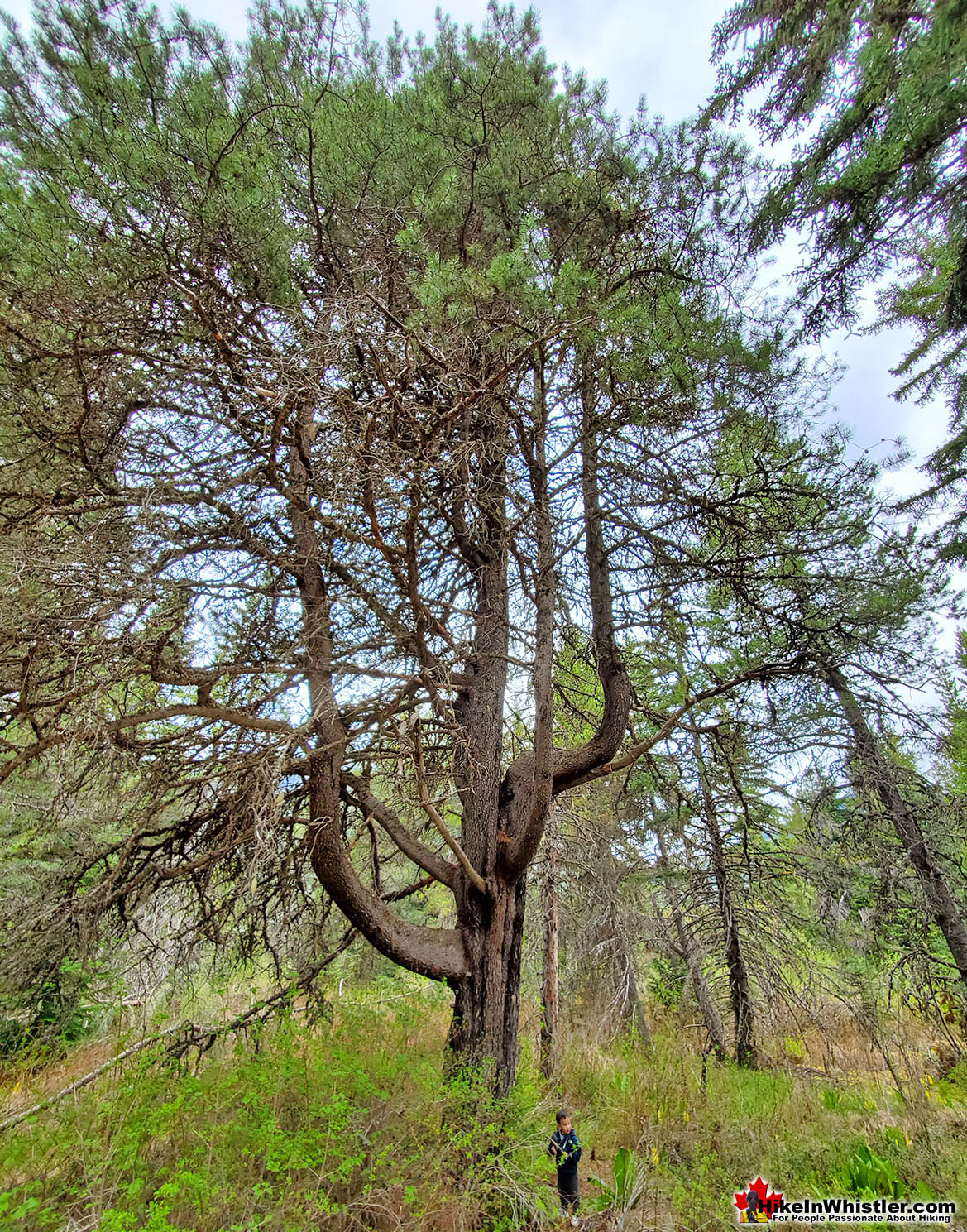
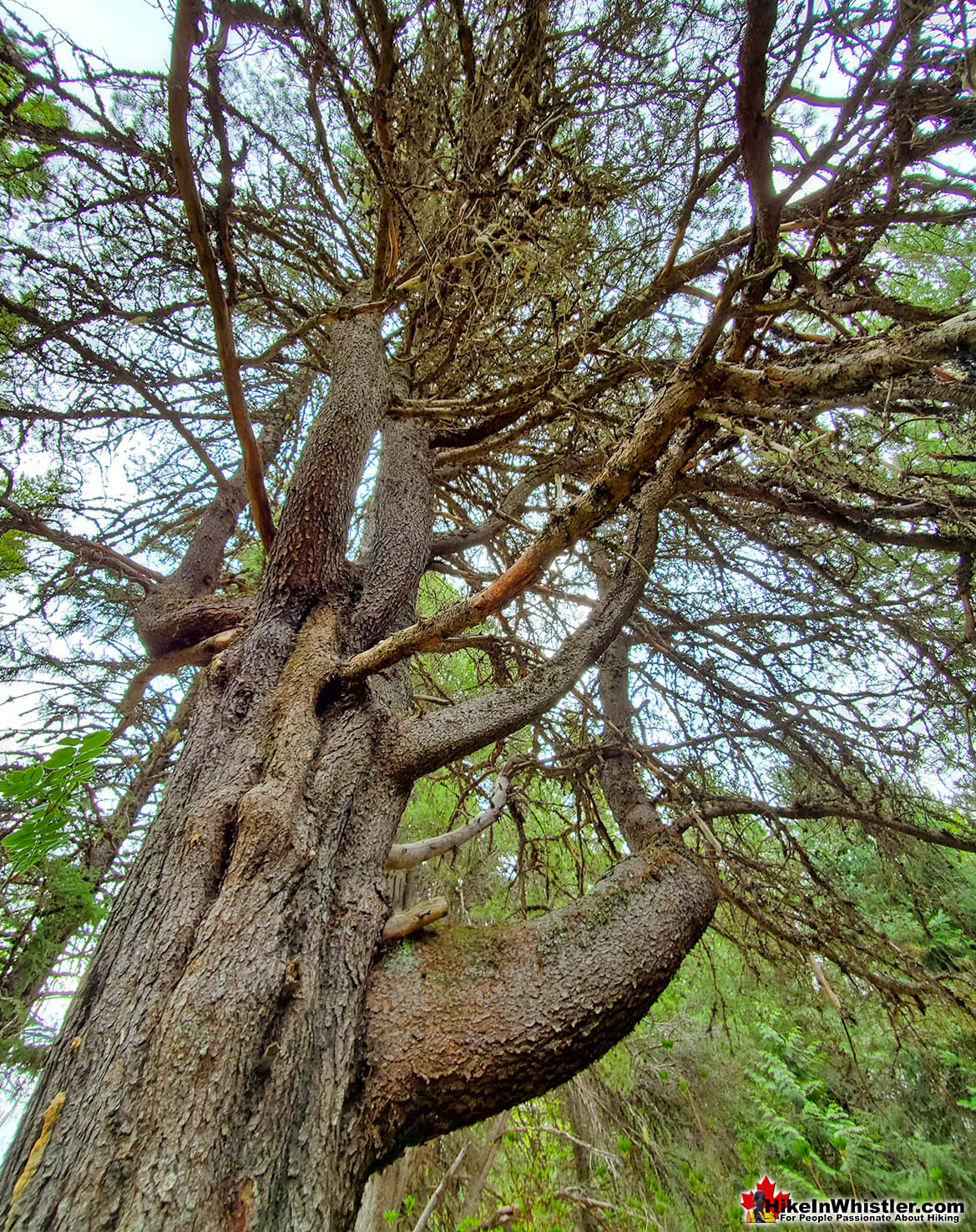
Pictured below is a nice grove of very hardy lodgepole pine trees alone the Brew Lake trail. Trees that are stunted and brutalized by their hardy environment are known as krummholz which literally translates from German as bent, crooked, twisted wood.
More Whistler & Garibaldi Park Hiking A to Z!
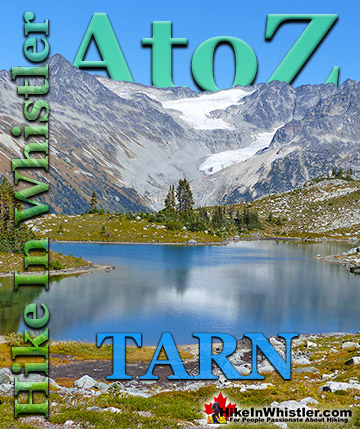
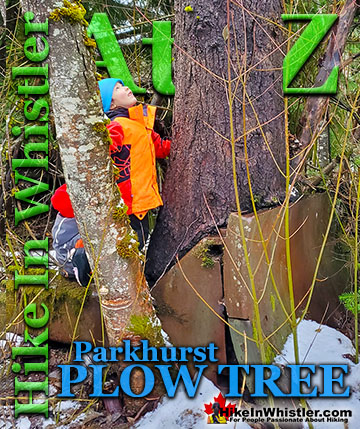

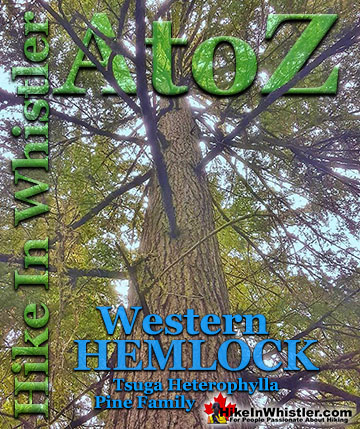

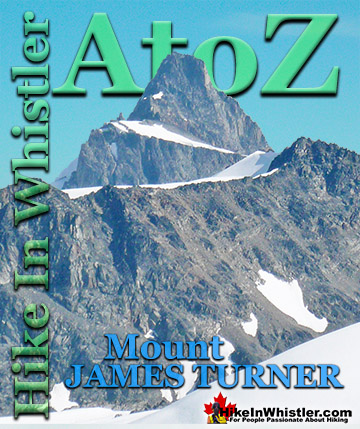
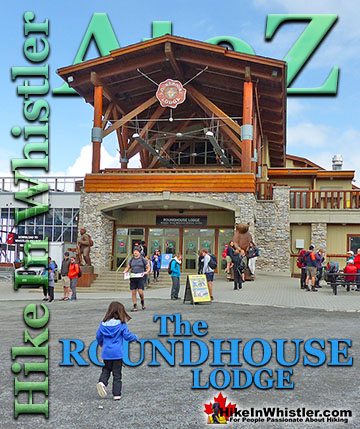

The Best Whistler & Garibaldi Park Hiking Trails!
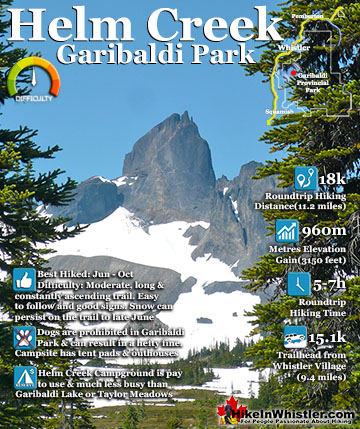
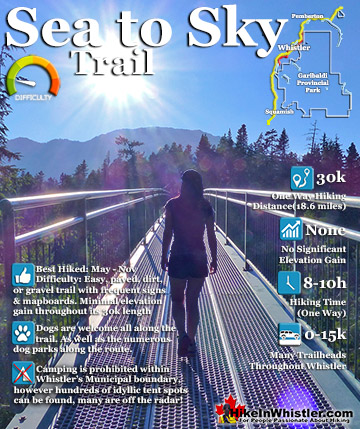
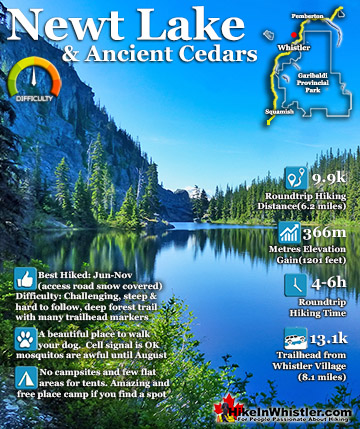
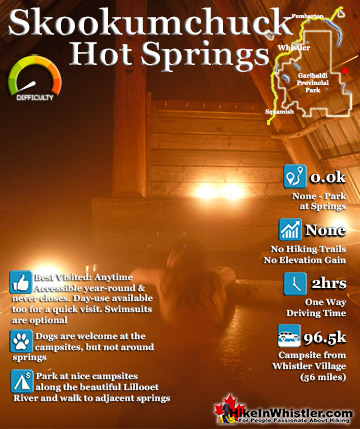
Whistler & Garibaldi Park Best Hiking by Month!
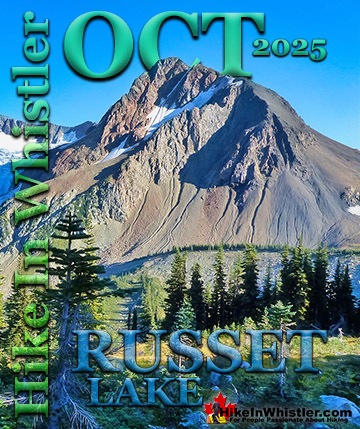
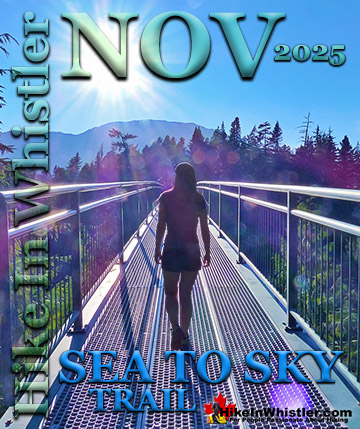

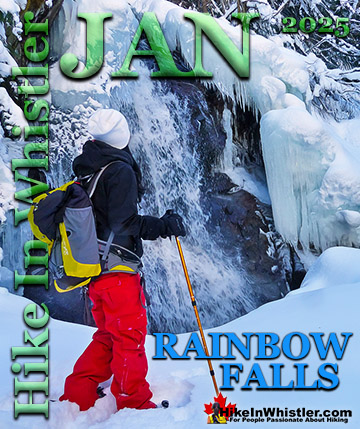
Explore BC Hiking Destinations!

Whistler Hiking Trails

Squamish Hiking Trails
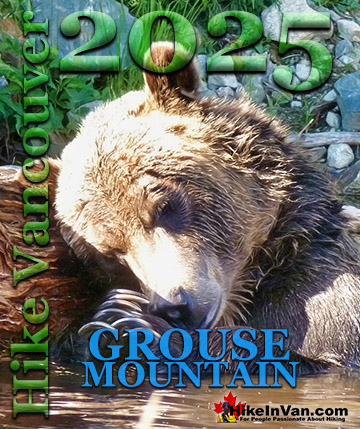
Vancouver Hiking Trails

Clayoquot Hiking Trails

Victoria Hiking Trails


